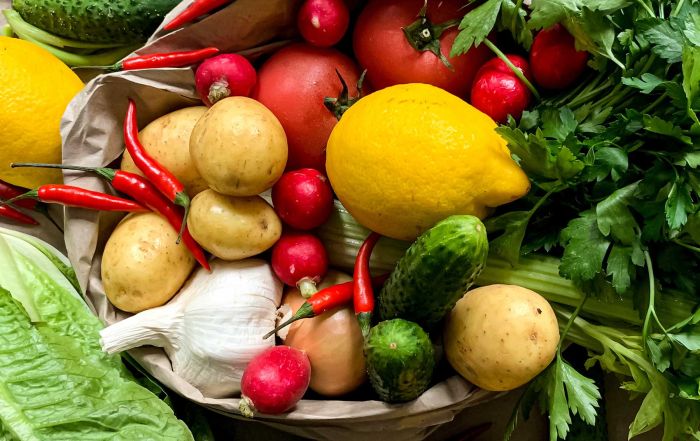Why Cooling Foods Correctly Isn’t Something to Chill Out Over
Twenty-eight years ago last month, Kevin began his career in the foodservice industry. He started as an assistant prep cook in an independent owned restaurant in Iowa. Like many of you, he remembers his first few days just like it was yesterday. Having never stepped foot in a commercial kitchen, it was a whirlwind of learning. He was trained to do so many “new” things in those first few weeks, dishing up salads, cleaning and peeling ridiculous amounts of carrots and onions, closely following recipes to make steam-jacketed kettles full of chili, spaghetti sauce, or any one of a variety of homemade soups. He also faintly recalls the discussion of cooling those soups, which were cooked in bulk, cooled, and re-heated in smaller batches for service over the course of a few days. Back then, the discussion went something like this, “after cooking, we put the [insert name of soup or sauce here] into these two-gallon storage containers and place it in the cooler as quickly as possible. We never put the lid on, we leave it askew so we can let heat out. About an hour or so later, we can put the lid on and label it.”
Back then, that conversation made perfect sense. Kevin grew up participating in Foods and Nutrition projects in 4-H, so he was aware of the basics of food safety. Flash forward about 5½ years to the spring of 1997 when he was a freshman in Dr. Cathy Strohbehn’s HRI 293, Hospitality Sanitation course at Iowa State University (in which he earned an A, by the way!😁). This was his first indication that perhaps the practices used at the restaurant were not as foolproof as he once thought they might be.
… improper cooling practices contributed to 504 outbreaks associated with restaurants or delis.
-Centers for Disease Control and Prevention
Flash forward another 20 years, and Kevin was at Kansas State University and working with a very talented team of researchers to complete a cooling study as part of the Center for Food Safety in Child Nutrition Programs (which include the National School Lunch and Breakfast Programs). Their focus was to replicate practices observed in school nutrition operations, which were not necessarily best practices. [If you need some reading material to put you to sleep at night, we will post the publications that resulted from these studies at the end of the blog for this month. 😂] As many of you likely know, the Food Code requires hot, temperature controlled for safety foods be lowered from a temperature above 135°F to below 70°F in two hours, and then reach below 41°F within a combined total of six hours. The researchers used various cooling methods and products and learned very quickly that even reducing food hot-off-the-stove to a 2” depth and placing it directly in the cooler was not going to be sufficient to meet the FDA Food Fode requirements. One of the methods tested was to place a 128oz Rapi-Kool™ into a stock pot of chili. This is NOT the proper way to use a Rapi-Kool™, but it was done to replicate a cook who may be anxious to go home at the end of their shift and simply placed the Rapi-Kool™ in the pot of chili and went home, assuming that it would cool the chili properly. While the researchers didn’t necessarily think it would meet the FDA requirements, it took an astonishing 24+ hours to cool! In defense of the Rapi-Kool, that product works great in an active cooling scenario (in which the cool stick is agitated or used to stir the product periodically through the cooling cycle), but again, they are not designed as a passive cooling device.
Many operators may be reading this and wondering if cooling is really that big of an issue with regards to foodborne illness outbreaks. The Centers for Disease Control and Prevention notes that between 1998 and 2008, improper cooling practices contributed to 504 outbreaks associated with restaurants or delis. An article in Science Daily back in 2000 even noted that improper cooling is thought to be the top cause of foodborne illnesses in the United States. Improper cooling continues to stay on the list of the top five reasons why foodborne illnesses occur.
Have the cooling practices used in your operation been given a thorough review? Do employees know the correct way to cool products that ensures there is no temperature abuse? Join us for our November webinar, Chill Out! Implementing Safe Food Cooling Practices with Dr. Paola Paez, Kevin’s colleague from the Center for Food Safety Research at Kansas State University, and learn a few strategies to implement correct cooling practices in your foodservice. Cooling food properly isn’t something that should be taken for granted and simply chill out over. It also isn’t something that requires a large investment, except in knowledge. Know that your cooling practices work for your business. Risk Nothing.
[/vc_column_text][vc_separator style=”shadow” border_width=”3″ el_width=”70″][vc_column_text]READ MORE POSTS
Temperature Checks: Safeguarding Your Foodservice Business with Every Delivery
There is no mistake that for those of us in the Midwest, and much of the [...]
The Critical Role of Staff Training and Education in Food Safety for Foodservice Professionals
In mid-June, my colleagues and I at Kansas State University offered our Serving up Science: The [...]
Halfway Gone, A Mid-Year Food Safety Check-up for your Foodservice Business
July is often a time when a portion of us in the foodservice business are at [...]
From Farm to Fork: Knowing the Importance of Food Origins
In the foodservice industry, maintaining high standards for the food that comes into your back door [...]










